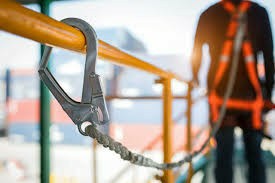


 349,500 Offered Certificates
349,500 Offered Certificates
 24/7 Online Training
24/7 Online Training
 Money Back Guarantee
Money Back Guarantee
 Fully Accredited Courses
Fully Accredited Courses

Created at: 22-02-2025 18:00
Working at heights is an essential aspect of various industries, but it comes with significant risks. Whether you are a construction worker on a scaffolding, a maintenance technician on a rooftop, or an electrician installing wiring overhead, the hazards of working at heights must be taken seriously. In this blog post, we will identify the key safety risks associated with working at heights and illustrate how proper training can effectively prevent accidents.
There are several common hazards that workers face when performing tasks at elevated levels. Understanding these risks is the first step towards mitigating them:
Fall protection systems, such as harnesses, lanyards, and guard rails, are critical in ensuring worker safety. Training enables workers to understand how to properly use these systems:
Even with the best training and equipment, accidents can still happen. This is why emergency response planning is crucial:
Training has proven effective in reducing workplace accidents. Here are a couple of real-life incidents illustrating its importance:
A construction company in Dublin implemented a rigorous Working at Heights training course for its workers. In one instance, a worker forgot to connect their harness to a safety line while working on scaffolding. However, thanks to peer training, another worker quickly intervened and reminded them to secure their harness, preventing a potential fall from over 20 feet.
A maintenance crew operating on a rooftop in Cork attended a Working at Heights certification course. During a sudden storm, the team quickly recognized the dangers of continuing work and performed a safe evacuation guided by their training. The experience and drills they conducted enabled them to work as a cohesive unit, preventing potential injuries from hazardous weather conditions.
As demonstrated by the case studies, the right training and adequate preparation can make all the difference in maintaining safety while working at heights. Investing in Working at Heights training and obtaining appropriate certification is a crucial step for employers and employees alike. Not only does it enhance individual safety, but it also cultivates a culture of safety within the workplace.
For those seeking to enhance their skills, consider enrolling in a Working at Heights safety course or an online course that fits your schedule. Remember, safety is a shared responsibility, and the first step towards a safer working environment is education.
If you have any questions or would like to enroll in a Working at Heights Course Online, feel free to get in touch at [email protected]. Stay safe, and let’s work together to build a safer future!